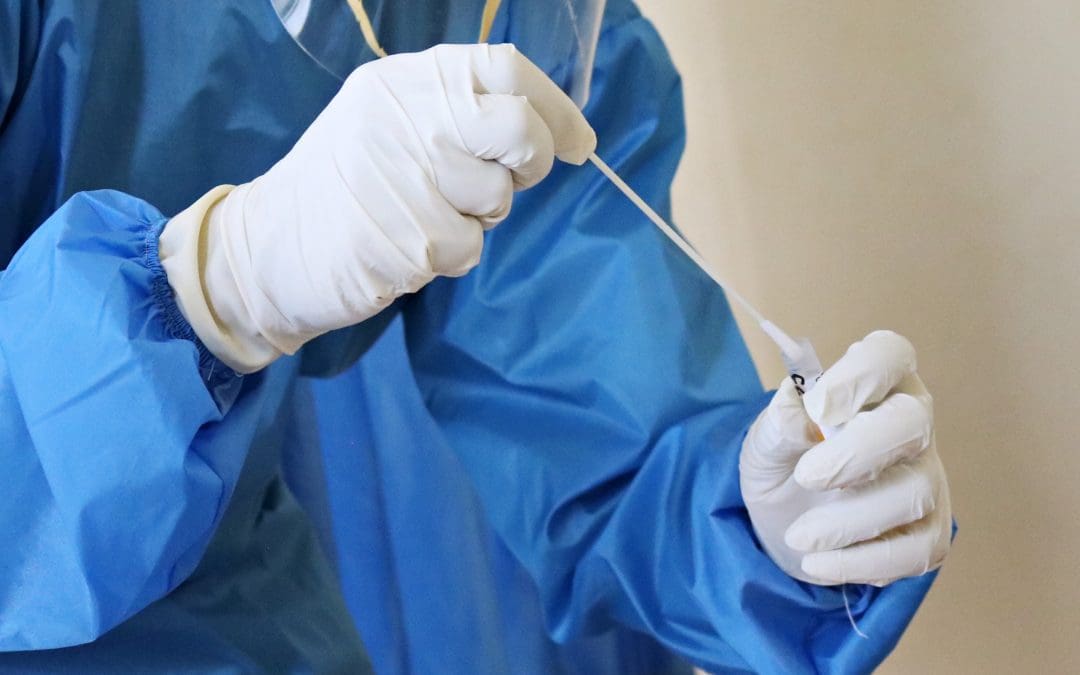Author: Andrew F. Brouwer, PhD, MS, MA, Department of Epidemiology, University of Michigan, Michigan Center for Infectious Disease Threats and Pandemic Preparedness (MCIDT) Faculty Affiliate
The standard surveillance for respiratory viruses comes from people who seek medical care for their symptoms.
However, not everyone that is infected gets sick, and not everyone who gets sick goes to the doctor, so focusing on medically attended disease means that we may be missing vital information about patterns of transmission.
For example, if we know that a certain respiratory virus causes severe illness mostly in adults over 65 years, we might target vaccine development to that age group. But, if we find that children under 5 years have the highest burden of infection and are responsible for most of the transmission, our vaccine development priorities might change or grow.
Routinely testing a representative sample of the population regardless of symptoms would be challenging for multiple reasons, including the difficulty in accessing hard-to-reach populations and the size of the infrastructure needed. Accordingly, large, representative studies are typically conducted only once every 1-2 years and are not equipped for real-time surveillance. One alternative approach is to test a group of people not tied to any specific disease, and statistically adjust for differences between the sample and the full population. However, samples that are convenient and easy to access may not be diverse enough for simple statistical adjustments to be sufficient.
Medical examiner’s offices, which investigate the cause of death for people who die of sudden or unexpected deaths of natural or other-than-natural causes, including accidents and violent deaths, see a wide range of the population. Of course, decedents—those who have died—tend to be older and vary by other sociodemographic attributes, and we are developing methods to appropriately weigh decedents so that they represent the underlying population. While infectious disease surveillance in decedents has been proposed for a long time, no large-scale surveillance system for tracking infections in decedents has been set up. In the SARS-CoV-2 pandemic, where multiple innovative approaches to surveillance were being developed, my collaborators at the Wayne County Medical Examiner’s Office began swabbing and testing over 1,000 decedents as part of their medical examinations.
We found that SARS-CoV-2 infections in decedents with a SARS-CoV-2 exposure closely matched the percent positivity of tests in the catchment area over time, strengthening the evidence that decedent surveillance has potential as a supplementary disease surveillance system.
We also found stark racial differences between the group of decedents that tested positive for SARS-CoV-2 and the group that tested negative; 82% of those that tested positive were Black, while only 51% of those that tested negative were Black. These findings underscore the severe health disparities experienced by Black people during the COVID-19 pandemic (and more generally) in the US. Further, they underscore the need to examine the role of socioeconomic and social vulnerability in respiratory virus infection.
Our work underscores the potential of decedent respiratory virus surveillance to help us better understand underlying patterns of infection, motivate public health priorities for the development of interventions and vaccines, and provide another data stream for real-time respiratory virus outbreak tracking. Ultimately, we hope to help develop a durable decedent surveillance program here in Michigan and encourage a national network of sites to provide estimates of epidemic spread and endemic patterns of infection.
Resources:
- Brouwer A. F., Myers J. L., Martin E. T., Konopka, K. E., Lauring, A. S., Eisenberg, M. C., Lephart, P. R., Nguyen, T., Jaworski, A., & Schmidt, C. J. (2021). Severe Acute Respiratory Syndrome Coronavirus 2 Surveillance in Decedents in a Large, Urban Medical Examiner’s Office, Clinical Infectious Diseases, 72(10), e580–e585. https://doi.org/10.1093/cid/ciaa1312
- Nolte, K. B., Hanzlick, R. L., Payne, D. C., Kroger, A. T., Oliver, W. R., Baker, A. M., McGowan, D. E., DeJong, J. L., Bell, M. R., Guarner, J., Shieh, W. J., & Zaki, S. R. (2004). Medical Examiners, Coroners, and Biologic Terrorism, Morbidity and Mortality Weekly Report, 53(RR08),1-27. https://www.cdc.gov/MMWr/preview/mmwrhtml/rr5308a1.htm

